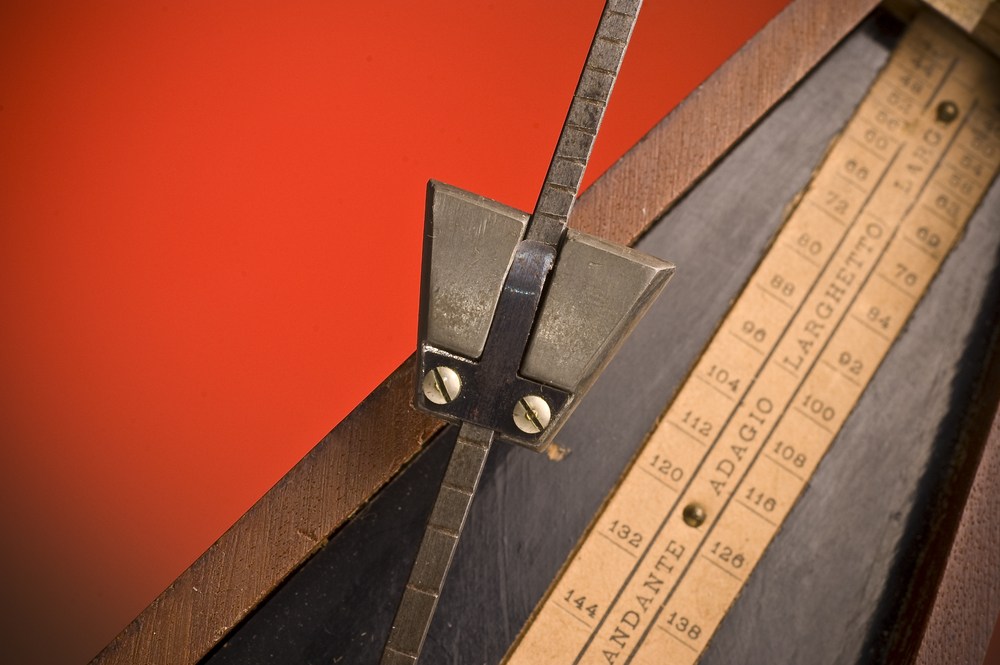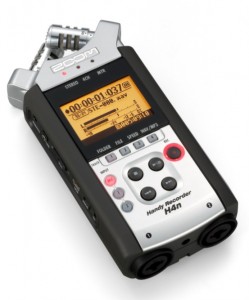 “Routine drill is a poor substitute for the fun of utilizing ears and rhythm for making music.”
“Routine drill is a poor substitute for the fun of utilizing ears and rhythm for making music.”
–Abby Whiteside, pianist
Abby Whiteside on Piano Playing, p. 5
“Tick, tick, tick,” drones the metronome. “Plunk, plunk, plunk,” goes the music student.
What’s wrong with that picture?
Pretty much everything.
Rhythmic Precision = Expressive Precision
Although a metronome can be a musician’s best friend, countless students use metronomes in ways that instill mechanical, inexpressive habits.
As I see it, rhythmic precision is a facet of expressive precision. And metronomes can support or squash our expressive impulses, depending on how we use them.
What I mean is that rhythmic exactness involves, among other things, how we place, articulate, color, and emphasize pitches and phrases.
“Rhythmic precision is a facet of expressive precision.”
Metronomes, even programmable ones such as the Dr. Beat, can’t deliver human, musical pulses. Still, without the aid of metronomes, I suppose that few of us could as readily achieve rhythmic mastery.
The key is to use metronomes imaginatively, in ways that enhance our musicality. Here are four ways to do so.
4 Ways to Use a Metronome to Enhance Musicality
1. Vocalize & Move
Extract a portion from a piece or exercise, especially one that trips you up rhythmically. Then, switch on your metronome, and, at a moderate tempo, repeatedly vocalize the rhythm of the excerpt as follows:
- Set your metronome on the larger pulse if practical (in 4/4 meter, have it click on the half note as opposed to the quarter).
- Expressively and precisely vocalize counting syllables – “1 and-uh 2 and” – or rhythmic sounds of your own invention – “Bum bah-dah bee-duh”.
- As you vocalize, you might move rhythmically around your practice room and playfully embody the character of the music. At minimum, direct the pulse with your arm.
- When you’re secure vocalizing the rhythms, play or sing the intact excerpt, adjusting the tempo as appropriate – choose a slow enough tempo that you can execute easily while conveying the music’s character.
2. Toy With Your Timing

- With your metronome marking the larger pulses, and you executing in sync with those pulses, drive shorter notes toward longer ones and move from weaker beats to stronger ones. Stir up irresistible forward motion.
- See pages 31-33 of The Musician’s Way for a detailed discussion of forward motion and the suggestive nature of rhythmic notation (music examples included).
“The key is to use metronomes imaginatively, in ways that enhance our musicality.”
3. Vary Your Emphasis
Few things are more expressionless than music performed with uniformly emphasized beats. “Typing,” I call it.
Mono-accented music has no place in musical communication (except when deliberately used for effect) just as monotone speech doesn’t belong in expressive conversation.
- Whenever you play or vocalize, accompanied by a metronome or not, create a lush topography of varied accents. Make strong things strong and weak things weak.
- Adjust your volume, color, and articulation to sculpt every gesture, even when you’re working on humble exercises. Override the blandness of a metronome rather than mimicking its uniformity.
“Mono-accented music has no place in musical communication (except when deliberately used for effect) just as monotone speech doesn’t belong in expressive conversation.”
4. Bull’s-Eye the Downbeat
Your rhythmic experiments might range widely, but stay in touch with the downbeat, and land on it precisely and enjoyably.
- One tactic: set your metronome to sound only on downbeats, keeping in mind that some downbeats will be stronger than others.
- With your metronome ticking in the background, periodically record yourself playing or singing and promptly listen back, objectively weighing your rhythmic accuracy and flair.
* * *
In these four ways, we use metronomes to provide feedback on the veracity of our internal pulse.
The metronome serves us, rather than the other way around.
Learn more about Dr. Beat Metronomes at Amazon.com. For more ways to practice productively and imaginatively, see Part I of The Musician’s Way.
Related posts
The beauty in basics
Glorious details
Learning new material
Mastery and mystery
Self-recording in practice
© 2011 Gerald Klickstein
Photo © M. Jacques, licensed from Shutterstock.com


I have been learning the piano for about five years now. I used to struggle with rhythmic precision a lot. Regular intense practice has helped me overcome that. Reading about it here has helped to clear up the problem even more for me. Thanks.
Brilliant article! Agree completely.
It’s a great way to get the creative juices going as well especially if you’ve got the rhythmic equivalent of writer’s block!
Unfortunately, I feel as if I’m forever trying to achieve rhythmic accuracy. Try, try again…